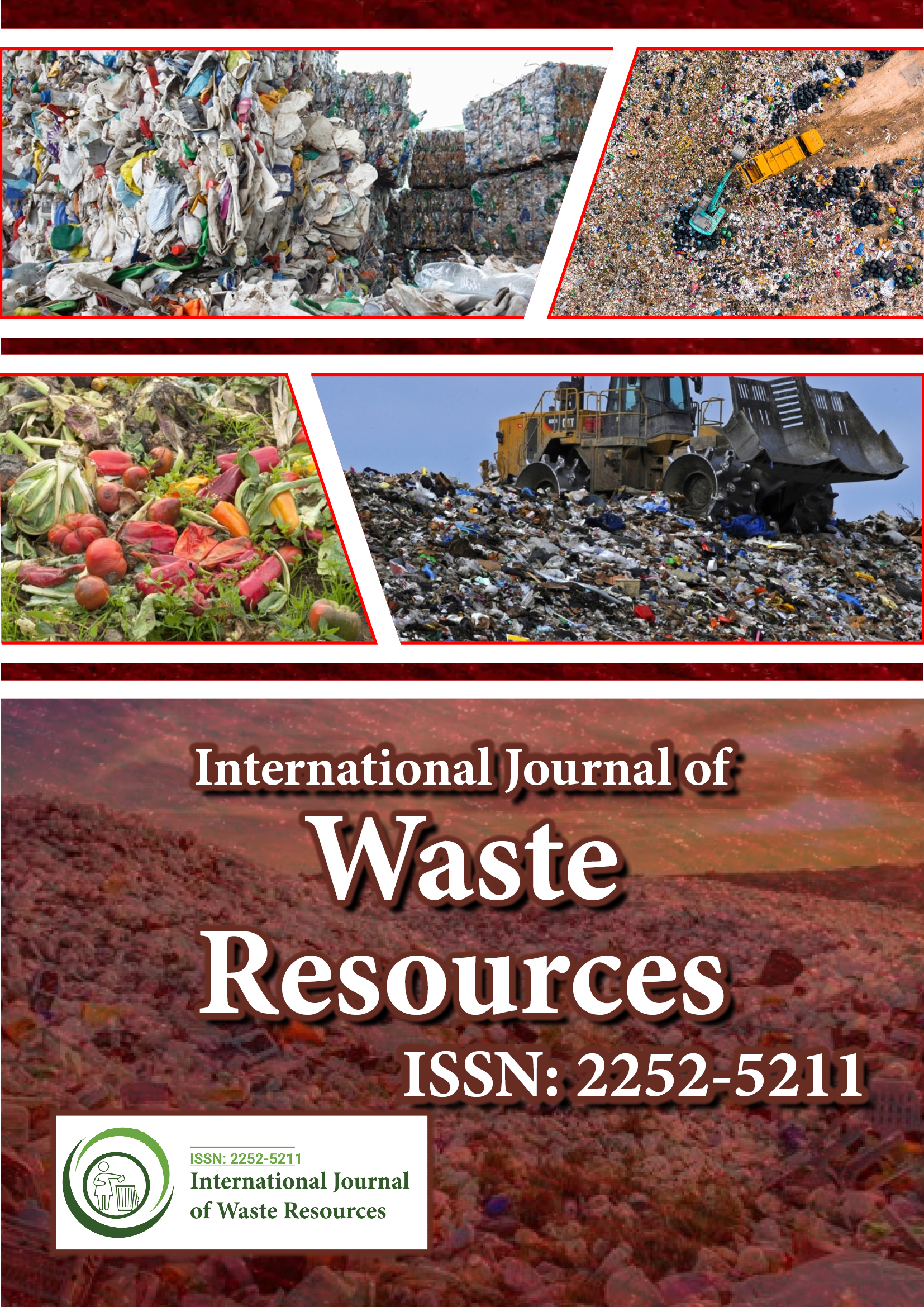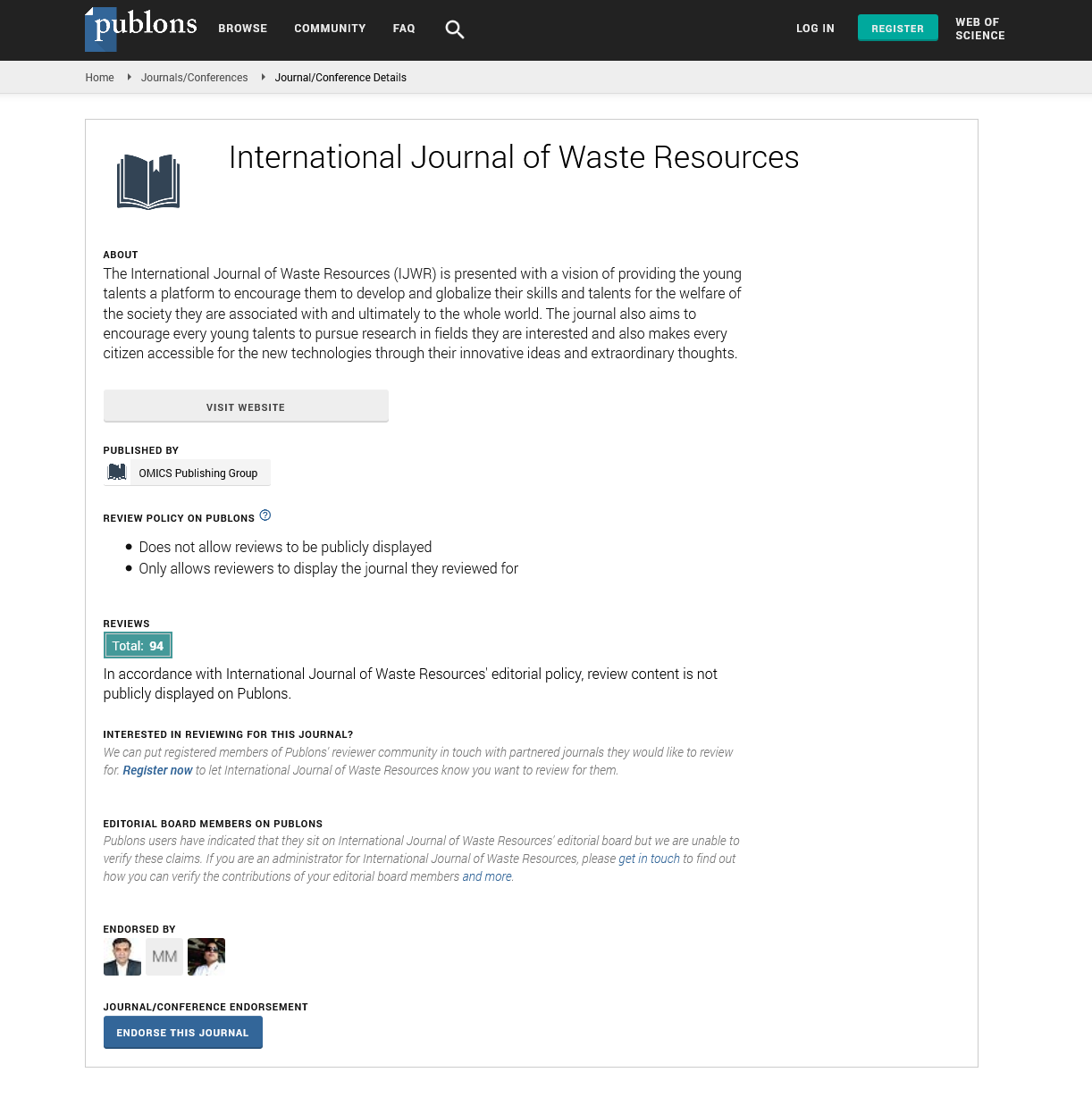Indexed In
- Open J Gate
- The Global Impact Factor (GIF)
- Open Archive Initiative
- VieSearch
- International Society of Universal Research in Sciences
- China National Knowledge Infrastructure (CNKI)
- CiteFactor
- Scimago
- Ulrich's Periodicals Directory
- Electronic Journals Library
- RefSeek
- Directory of Research Journal Indexing (DRJI)
- Hamdard University
- EBSCO A-Z
- Publons
- Google Scholar
Useful Links
Share This Page
Journal Flyer

Open Access Journals
- Agri and Aquaculture
- Biochemistry
- Bioinformatics & Systems Biology
- Business & Management
- Chemistry
- Clinical Sciences
- Engineering
- Food & Nutrition
- General Science
- Genetics & Molecular Biology
- Immunology & Microbiology
- Medical Sciences
- Neuroscience & Psychology
- Nursing & Health Care
- Pharmaceutical Sciences
Commentary - (2025) Volume 15, Issue 1
Nuclear Waste Management: Challenges and Solutions for a Safer Future
Ajisgiri Musa*Received: 31-Jan-2025, Manuscript No. IJWR-25-29246; Editor assigned: 03-Feb-2025, Pre QC No. IJWR-25-29246; Reviewed: 14-Feb-2025, QC No. IJWR-25-29246; Revised: 21-Feb-2025, Manuscript No. IJWR-25-29246; Published: 03-Mar-2025, DOI: 10.35248/2252-5211.25.15.600
Description
Nuclear energy plays a vital role in the global energy landscape, offering a low-carbon alternative to fossil fuels and contributing significantly to electricity generation. Despite its benefits in reducing greenhouse gas emissions, nuclear energy also produces radioactive waste that presents serious environmental and health risks. Managing this nuclear waste safely is one of the most pressing responsibilities associated with the use of atomic power.
The waste generated through nuclear power production, scientific research, medical applications and defense programs varies widely in its composition, radioactivity and longevity. Nuclear waste can range from low-level materials like contaminated gloves and tools, which pose relatively limited risks, to high-level waste such as spent nuclear fuel, which remains hazardous for thousands of years. Spent fuel, removed from reactors after it has become inefficient for energy production, is still highly radioactive and heat-generating, requiring sophisticated storage and containment strategies. High-level waste, typically resulting from the reprocessing of spent fuel or reactor operations, contains intensely radioactive substances that demand long-term isolation. Intermediate-level waste, such as chemical sludge and reactor components, also requires shielding but does not generate as much heat. In contrast, low-level waste generally includes items with minimal radioactivity and shorter-lived isotopes.
The hazards of nuclear waste stem from its emission of ionizing radiation, which can damage biological tissues and Deoxyribonucleic Acid (DNA), potentially leading to cancer, genetic mutations, or even death with prolonged exposure. The level of danger varies according to the type of radioactive material, its half-life and how individuals might come into contact with it—whether through direct contact, inhalation, or ingestion. Because of these risks, it is crucial to ensure long-term containment that prevents the spread of radiation into the environment.
Modern nuclear waste management seeks to minimize these risks by applying a range of strategies for safe handling, treatment and disposal. One approach involves minimizing waste at the source and conditioning it through stabilization processes, such as embedding it in glass or concrete to prevent leakage. Interim storage is commonly used to hold waste temporarily in secure facilities. For instance, spent fuel is often initially stored in cooling pools, allowing it to lose excess heat and radioactivity before being transferred to dry casks designed for longer-term storage.
When it comes to disposal, low- and intermediate-level wastes are often placed in engineered near-surface facilities like vaults or trenches, which are designed to contain radiation safely over the short to medium term. High-level waste and spent fuel, however, require more secure solutions. Deep geological disposal is widely regarded as the most viable long-term method, involving the burial of waste hundreds of meters underground in stable rock formations that can isolate radioactivity for millennia. While ocean disposal was practiced in the past, it has been largely discontinued due to its environmental risks. Other ideas, like disposing of waste in outer space, remain theoretical and face substantial economic and technical barriers.
Despite technological progress, managing nuclear waste presents several ongoing challenges. Ensuring the safety and containment of radioactive materials over periods spanning thousands of years is a daunting task, requiring highly durable engineering and constant scientific oversight. Public concern and opposition often arise due to fear of radiation and lack of trust in governmental decisions, leading to resistance against proposed waste storage sites. Political and regulatory complications also slow down progress, as differing interests and legal constraints make consensus difficult. Furthermore, the high cost of building and maintaining nuclear waste facilities adds financial strain to governments and utility companies.
Globally, nations have adopted various strategies to address these challenges. Finland and Sweden have made significant progress in establishing deep geological repositories, with Finland’s Onkalo project standing out as a pioneering facility for the permanent storage of high-level waste. France has focused heavily on reprocessing spent fuel to recover usable materials and reduce overall waste volume, though some high-level residues still require disposal. The United States primarily relies on interim storage for spent fuel, with long-term repository plans like the Yucca Mountain project hindered by political opposition and public concern.
Looking ahead, scientific research continues to explore innovative methods to improve nuclear waste management. Advanced reprocessing techniques are being developed to reduce the toxicity and volume of waste. Transmutation, a process using nuclear reactions to convert long-lived radioactive isotopes into shorter-lived ones, is another promising field of study. Improvements in storage materials are also being pursued to ensure more effective containment of radioactivity over extended timeframes. Additionally, there is growing interest in international cooperation to establish shared waste repositories and standardized safety practices across borders.
Conclusion
In conclusion, while nuclear energy offers undeniable benefits in addressing climate change and energy security, its long-term sustainability depends on the safe and effective management of its waste. Addressing the complex scientific, technical, social and political dimensions of nuclear waste disposal requires ongoing innovation, clear communication and genuine public engagement. By advancing technology, building public trust and fostering global collaboration, we can work toward nuclear waste solutions that protect both current and future generations.
Citation: Musa A (2025). Nuclear Waste Management: Challenges and Solutions for a Safer Future. Int J Waste Resour: 15:600.
Copyright: © 2025 Musa A. This is an open-access article distributed under the terms of the Creative Commons Attribution License, which permits unrestricted use, distribution and reproduction in any medium, provided the original author and source are credited.

